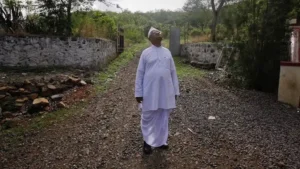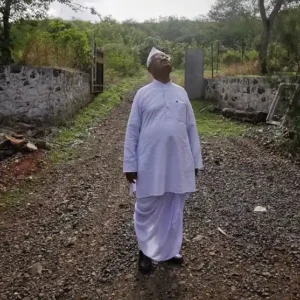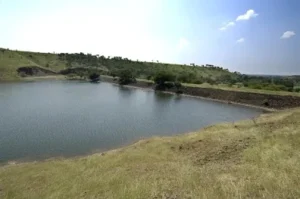RALEGAN SIDDHI – A SUSTAINABLE VILLAGE MODEL FOR THE COUNTRY
RALEGAN SIDDHI – A SUSTAINABLE VILLAGE MODEL FOR THE COUNTRY
In times where ‘sustainability’ is a concept practised to stay on trend, Ralegan Siddhi is a village where they practise it as a lifestyle. This village is self-sufficient and has seen major growth in the last few decades. There is a familiar name behind the village’s evolution – Anna Hazare.

RALEGAN SIDDHI – A SUSTAINABLE VILLAGE MODEL FOR THE COUNTRY, a small village in Maharashtra’s Ahmednagar district, with a population of fewer than 2,500 people, is a model of environmental conservation. From being one of the poorest regions in the country to becoming one of the richest, this village has achieved the unthinkable.
RALEGAN SIDDHI – A SUSTAINABLE VILLAGE MODEL FOR THE COUNTRY
History of Ralegan Siddhi Story
Agriculture was the primary occupation in Ralegan Siddhi, but due to low rainfall and irrigation problems, the land wasn’t fertile enough to grow even basic crops. Because of such a situation, many people around the 1970s left Ralegan Siddhi to find local jobs elsewhere.
But their condition got worse as they didn’t find appropriate work for themselves and returned to their village empty-handed.
Unemployment and poverty arise, and consumption and production of alcohol became their new source of survival because they started producing alcohol as it needed less water and made them earn little money.
In 1975, Baburao Anna Hazare (a retired army officer) returned to Ralegan Siddhi and was disappointed to witness such misery in his village. People were addicted to alcoholism, and Anna decided to serve the rest of his life in the village’s prosperity and its citizens.
He tried helping the villagers by employing them in seasonal jobs but soon realized that only agriculture could end poverty and make them self-sufficient and happy.
To make that happen, he was obliged to resolve this water crisis so that they can grow crops and earn their livelihood
The World Bank Group stated that Ralegan Siddhi evolved from a region of extreme poverty to one of the richest in the country.
Rich, not only in terms of economy but also in terms of sustainability. The Ralegan Siddhi Model/ Project was implemented around 25 years ago and is considered to be one of the most successful models of change in India. Ralegan Siddhi is a model village for sustainable economic development. Anna Hazare, a resident of this village, started this project with one goal: to work with the residents and bring them out of their poverty-stricken state and transform the village into a self-sufficient and sustainable one. Their efforts paid off and the village is an inspiration for the rest of the world.
The transformation of the village began in 1975 when Hazare decided to dedicate his life to developing Ralegan Siddhi. His main motivation was to improve the water conditions in the village as it fell under a drought zone. Agriculture was the primary occupation, but owing to meagre rainfall and poor irrigation methods, the village wasn’t fit for growing any crops. The main reason for Ralegan Siddhi being so poor is that the village is so severely deprived of rainfall, which led to unemployment, as no one was able to find jobs, neither in the agricultural field nor elsewhere outside the village.
In a desperate attempt, they turned to producing alcohol illegally. There was an increase in alcoholism, violence towards women and ill health. Hazare took this as a sign to begin implementing changes immediately. Fortunately, the villagers understood their own situation and voluntarily worked to bring themselves out of their plight.
Hazare’s motto was ‘sustainable development’. The village, under his guidance, began working on watershed development/ water management projects by building nalla bunds*,* dams, borewells, percolation tanks and other structures to store and maintain water levels year-round. They also began utilizing solar power, planted lakhs of trees, and initiated drip irrigation methods. He suggested certain farming practices to increase agricultural productivity. Now, Ralegan Siddhi is a picture of sustainability. The village is now self-reliant, able to grow and harvest food grains and other produce, with time to spare for community service.

The main things that the village had to improve were watershed development, rainwater harvesting and renewable energy. The people of the village dedicated countless hours to develop their surroundings, making Ralegan Siddhi one of the best examples of watershed management in the country.
Ralegan Siddhi is proof that, even when faced with dire circumstances, it is possible to come through and stand back up. A whole system was developed to bring the village out of poverty, demonstrating the sheer power of the mind. They took control of their own development and chose to follow sustainable practices to do their bit for the environment.


